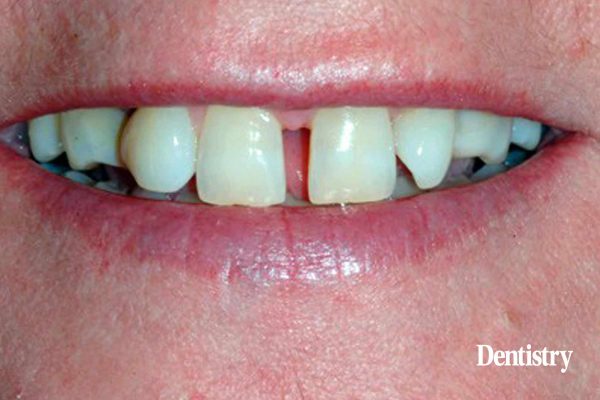Julian Caplan explores space closures from a digital standpoint.
Spacing between teeth may occur for several reasons:
- Protruding teeth
- Impacted teeth
- Missing teeth
- Periodontal disease, causing drifting of poorly supported teeth
- Microdontia – such as peg-shaped laterals
- Tooth-size arch-length discrepancy.
Apart from various functional incapacities, these malocclusions may be a source of compromised smile aesthetics and low self-esteem (Jung, 2010).
Microdontia (Shafer et al, 1958) is divided into:
- True generalised – all teeth are smaller than normal. The teeth are well formed, but small in size. The incidence of true generalised microdontia is very rare and the aetiology is linked to pituitary dwarfism and Down’s syndrome
- Relatively generalised – teeth are normal or slightly smaller than normal teeth within the range of size of teeth. The jaw size is slightly larger than the norm, giving an impression of microdontia. The aetiology of relatively generalised microdontia may be inheritance of jaw size from one parent. The teeth from another parent may lead to this condition
- Involving a single tooth – it is also called localised microdontia, commonly affecting maxillary lateral incisors and third molars. The incidence of this is relatively common.
Space evaluation
For all orthodontic-restorative cases, the use of the Bolton analysis is an invaluable diagnostic tool. It helps to mathematically define a tooth-size discrepancy (TSD). A TSD is defined as a disproportion among the sizes of individual teeth. If a tooth size discrepancy does exist with the anterior teeth and is corrected to ideal proportions, the aesthetic smile can be significantly improved (Bolton, 1958).
Bolton developed a method for estimating a TSD by measuring the summed mesiodistal widths of the mandibular to the maxillary anterior teeth from canine to canine; this was defined as the anterior ratio. The ideal value for the anterior ratio is 0.772, or 77.2%, when described as a percentage.
Bolton showed the deviation from the ideal value of any measured ratio would indicate the size of the discrepancy.
Therefore, as a general rule, an increased anterior ratio value could be due to small upper teeth or large lower teeth, or a combination of the two factors. A decreased anterior ratio could be due to large upper teeth or small lower teeth, or a combination of the two factors.
Following the clinical assessment of the available interdental space a decision can be made as to which treatment options are possible to achieve an aesthetic result. The more common treatment option possibilities for space closure are orthodontics, restorative, and ortho-restorative.
Informed consent is critical, and the biological and aesthetic pros and cons can be difficult for patients to understand. The use of intraoral scanners, combined with a virtual mock-up of treatment outcomes, can be a useful adjunct to informed consent. This can also clarify in the clinician’s mind the potential pitfalls of various treatment plans.
Case study
The case in Figures 1-8 shows the initial situation of a patient missing the upper lateral incisors with a virtual mock-up of the two main orthodontic possibilities – move the canines medially or move them distally. The majority of dentists would prefer to make space for the missing lateral incisors, then restore these with a removable bridge, a fixed bridge or implants.
However, it became very clear after discussion with the patient that they were against option two and opted for moving the canines mesially, followed by a restorative option of bridges and veneers.
By digitising cases like this it gives the dentist a bank of information to show future patients with similar problems. It also allows patients to better understand what tooth preparation is involved.
If tooth preparation images are not readily available, it is useful to prepare typodont teeth for specific issues (such as space closure), which will again allow a far more informed consent than a verbal discussion or a line drawing (Figures 9 and 10).
This article first appeared in Clinical Dentistry magazine. Subscribe to receive the latest issue of the magazine here.


